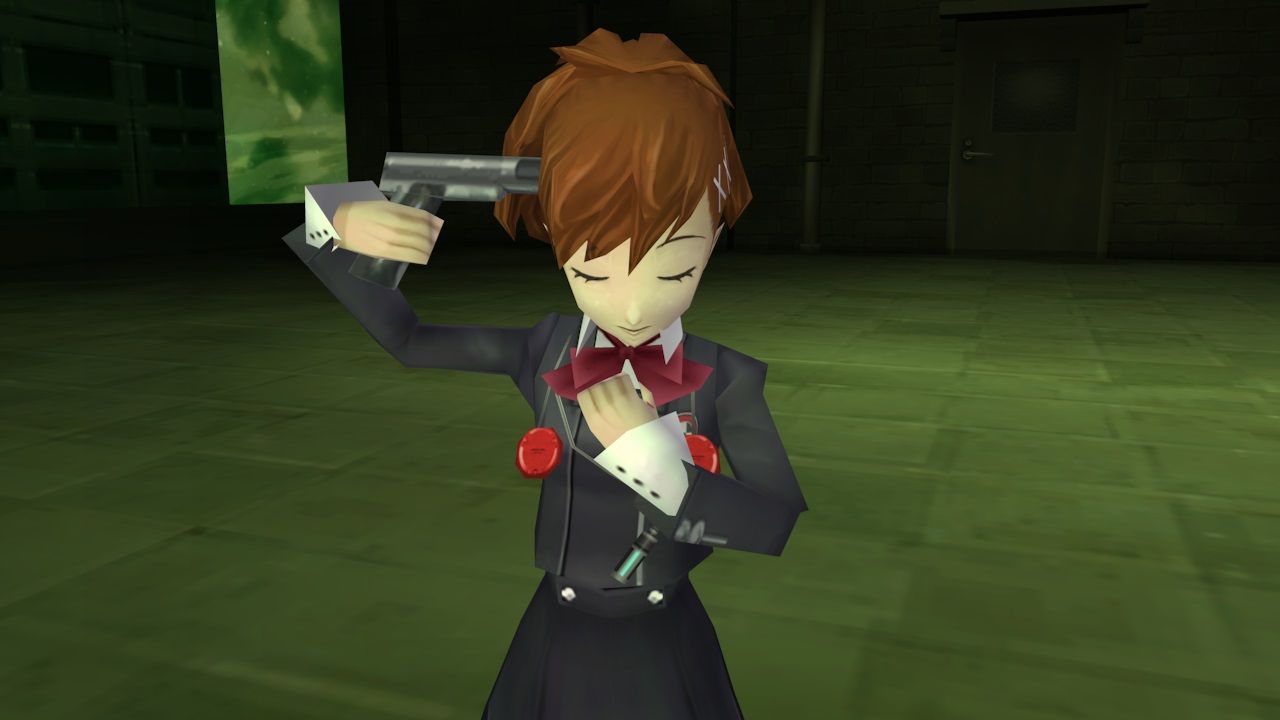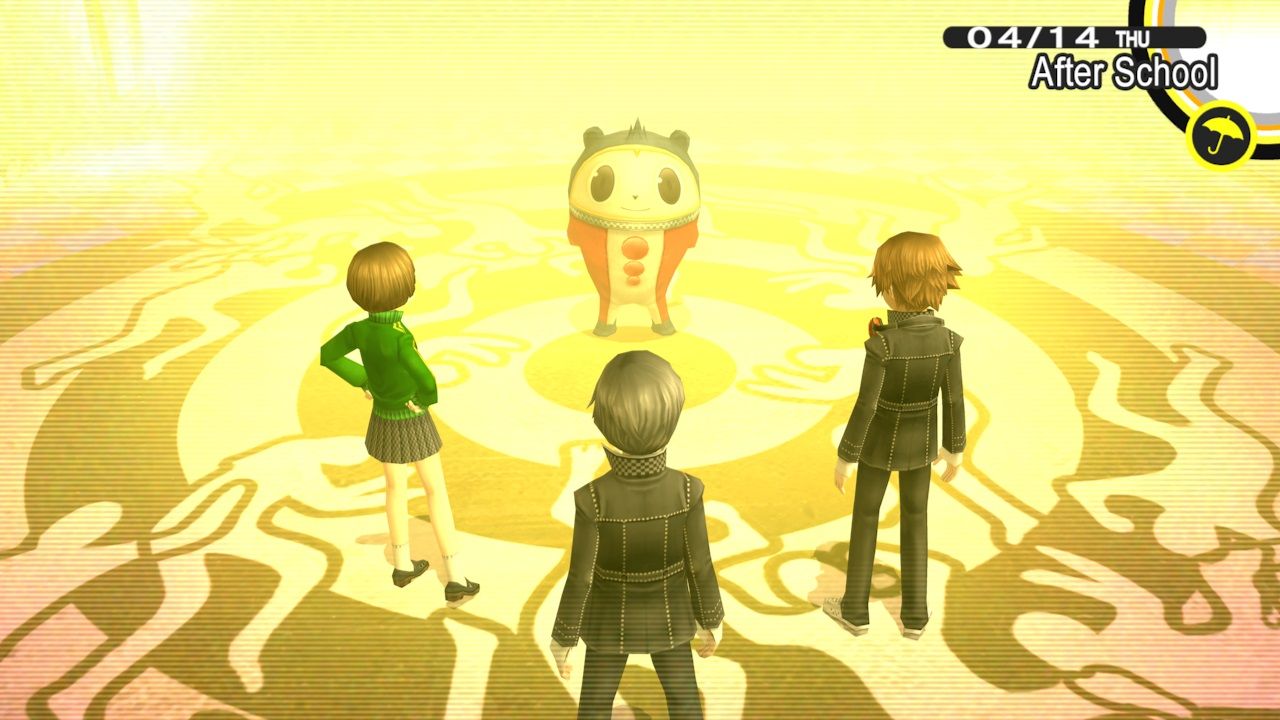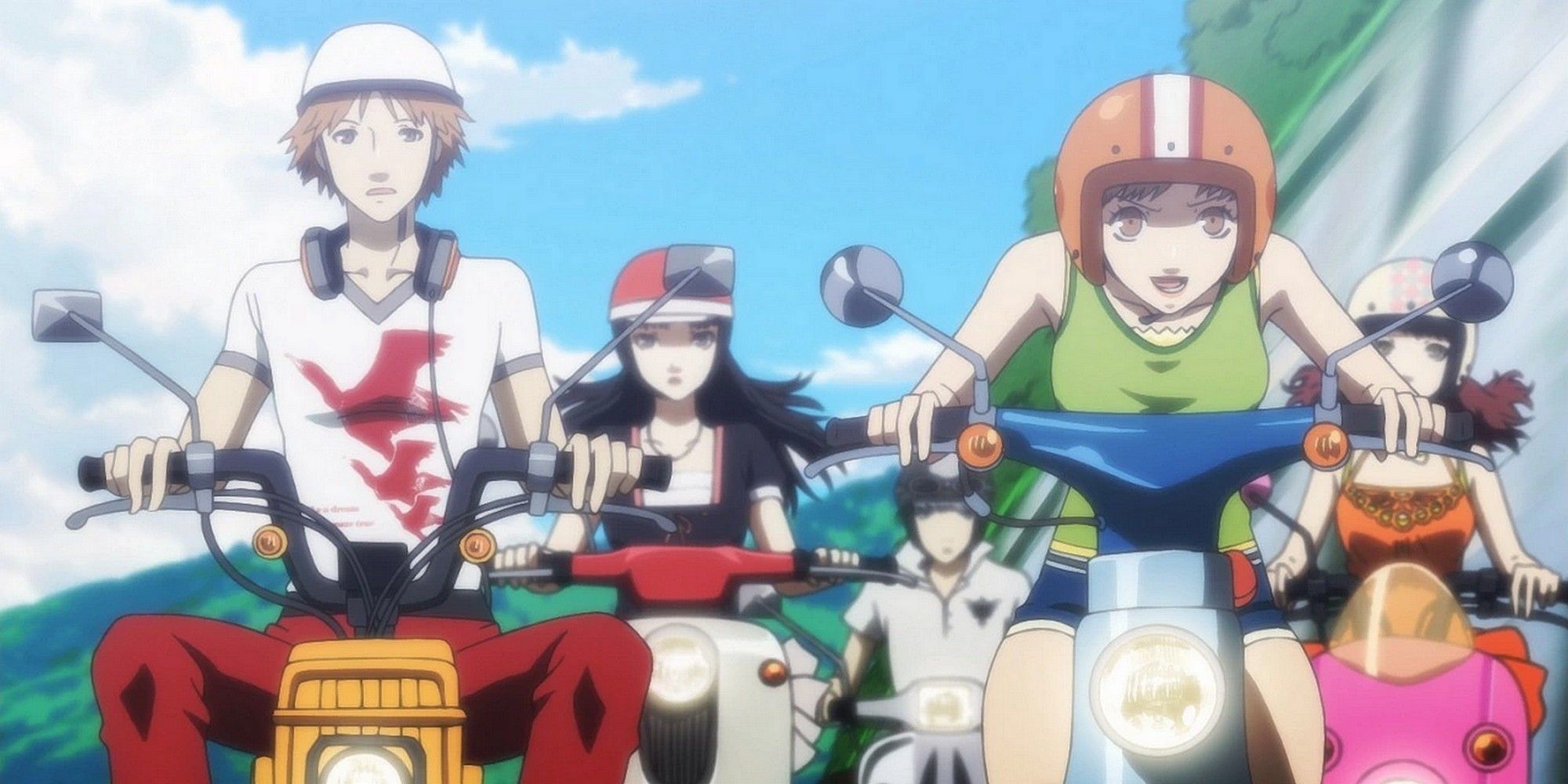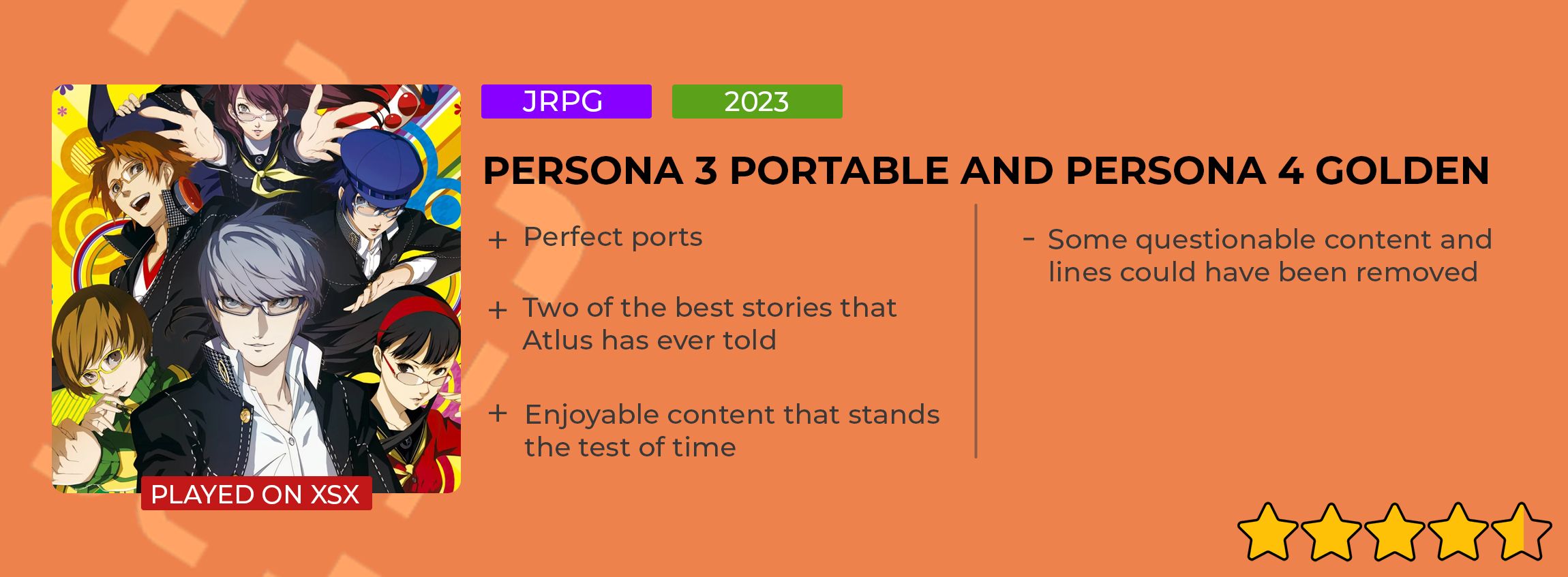Persona’s two latest ports have plots riddled with mystery and misdirection, enough jokes to form their own comedy club, and memorable characters that you’ll find adorable, irritating, downright strange, or even hot enough to romance. Then there’s the dungeon crawling, demon fusing, battling to banging music fun, and you still have to maintain good grades and the busy social life of your average high schooler. Get your calendars ready, you’re in for a packed schedule with Atlus’ ports of Persona 3 Portable and Persona 4 Golden to modern consoles.
You can easily rack up over 80 hours of gameplay, but even then, you won’t reach full completion, and what’s interesting is how each game enhances its content differently. Even if you maximise your time with social links and get the true ending on your first playthrough of P3P, there’s still the other gender protagonist’s route to pick and play. As for P4G, there are six potential endings, and if you want to get the true ending and unmask the real culprit, you’ll need to max out all social links, which is impossible in a single playthrough.
You can have the best game in the world, but that doesn’t necessarily mean it’ll make a good port. There’s always that question of whether it’ll run well on different platforms. For both P3P and P4G, the answer is a resounding yes. Naturally, the graphics are a little dated. The characters are blockier, the environments less detailed, and the animated scenes in Portable are not as well-crafted or used as often. However, I was impressed with just how clean everything looked, and the gameplay was flawless. Besides, the squatter-looking 3D character models are adorably charming in many ways.
For my review, I started with P3P, which has you join the persona-wielding SEES team tasked with exploring the mystery of the Dark Hour and the labyrinthian Tartarus, all while the population slowly becomes zombified. Persona 3 is arguably the darkest in the series and explores its theme of death in various ways. Many facets of the narrative have a lasting impact, adding a sense of finality to every choice and step of plot progression. Additionally, because the threat is on a wider scale — it’s not just you and your team at risk here, but the whole world — the stakes feel higher. You are constantly reminded of this impending doom as each town map is littered with NPCs who have become part of the Lost.
The best way to describe how much darker Persona 3 is than other Persona games is to explain that to summon their personas, the characters shoot themselves in the head. Persona 3 also has fewer extracurricular activities than later titles. In some ways, this benefits the game, emphasising the grim plot rather than softening the tone with an overabundance of slice-of-life gameplay.
While the main plot elements are the same regardless, there are enough differences between the male and female protagonists to make another playthrough worthwhile. It’s surprising how much difference another perspective can make in the game. As the male protagonist, Junpei is your bro, but as the female protagonist, I wanted to slap him. He utters a few sexist remarks and makes it seem like having tits means you’re less capable of leading the group.
Persona fans are no stranger to problematic lines and scenes, and I can never fully decide where I land on it. It depends on the specific example. Should you be able to romance a ten year old boy as the 17 year old female protagonist in P3P? It’s a hard no. When some male characters make weirdly sexist or misogynistic remarks to the female protagonist, that’s when I’m not as sure. Is this to do with the character, rather than poorly chosen content? I think it’s safe to say most of us lacked judgement when we were teens, and we’ve probably all said stupid shit at times. Japanese media has long struggled with gender equality, too, so is it surprising to see stuff like this in a game set in Japan in 2009? Especially when Persona 5 still struggles with these issues?
I don’t know the answer to those questions. I just know that when stuff like that happened in the game, I would cringe a little, dampening my overall enjoyment. I know ports traditionally don’t meddle with the content (at least, not by much), but I wonder how easy it would have been to fix a few lines or even remove a whole romance.
I saved the best for last — P4G. As Teddie would say, it’s unbearlievably good. Once again, you find yourself thrown into a mixed group of fellow students and persona users, but this time you’re on the trail of a serial killer, uncovering the mystery of the Midnight Channel urban myth, and exploring the strange shadow world accessed through the TV. Video killed the radio star last person you saw on TV, apparently.
Though P4G remains my favourite Persona game to date, that doesn’t mean I don’t see its faults — specifically, how it fails to live up to its full potential. P4G sets so many interesting and thought-provoking narrative arcs into motion, forcing its main characters to face issues about gender, stereotypes, sexuality, or living up to family expectations. There are many opportunities for the game to deliver a deep and meaningful message, but at the very last moment, it seems to lose confidence and allows the character's development to fizzle out. I don’t want to get into specifics and ruin interesting plot points, but it feels like a missed opportunity on multiple fronts.
I love the P4G cast the most because they don’t all fit into the usual tropes you’d expect, so it’s a shame when these characters who subvert expectations don’t get the development they truly deserve. The murder mystery element is another sweet spot for me, as I do enjoy a good whodunnit. P4G especially leans into this genre when you have to declare who the true culprit is. In fact, the whole multi-layered ending of P4G is peak Persona, chef’s kiss.
Each game has an iconic soundtrack you can listen to for hours on end, which is a staple for the series at this point, and they feature both English and Japanese voiceovers, so you can choose which you prefer. However, given their age, both games understandably offer less than Persona 5/Royal, with P3P being the most limited in gameplay.
There are fewer social stats, extracurricular activities, and jobs. Combat, shadows, and personas are more limited than what you might be used to, too. The biggest restriction is exploration. Tartarus is the only place where you move around in 3D space, elsewhere you select locations from a menu and interact using a cursor, reminiscent of visual novel games. P4G raises the bar further. Full 3D exploration in towns and dungeons, more extracurricular activities and jobs to enjoy, a larger persona roster, and improved persona features, to name just a few. Essentially, it looks prettier and has more fun things to do.
Persona 3 Portable and Persona 4 Golden are two brilliant examples of the perfect port. Though the graphics and features might not be as shiny as newer titles, the stories they tell, gameplay they offer, and the wealth of content that can be explored ensure these games stay relevant and allow them to hold their own, even against modern contenders. Enough time has passed to merit a revisit for old fans, but the launch across all platforms makes these games even more accessible and allows a whole new generation of players to experience them for the first time.
Score 4.5/5. An Xbox Series X review code was provided by the publisher.
Source: Read Full Article




